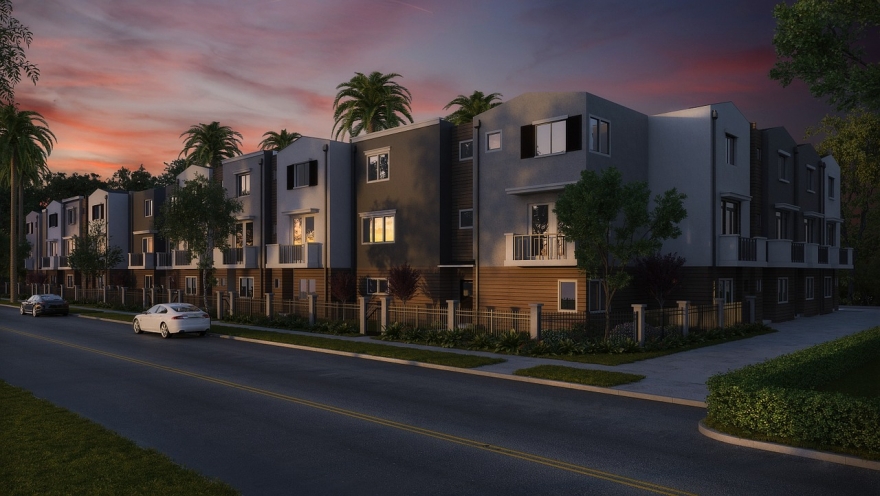Sustainability was defined in 1987 as “meeting our present needs without compromising the ability of future generations to meet their own needs” by the Brundtland Commission, which was formed four years earlier by the United Nations to study environmental concerns and the deterioration of natural resources.
The concept of sustainability can, however, be traced back to the Ancient Greeks. It gained momentum in the United States with the passage of the National Environmental Policy Act in 1969, and the formation one year later of the Environmental Protection Agency.
Its impact can now be felt as much in the Chicago area as anywhere else. As far back as 2004, the Chicago Sustainable Development Policy was established, with the goal of improving the sustainability of those housing projects that might be receiving city assistance.
It led in part to the Windy City’s preeminence in the green roof movement, which by 2013 saw vegetation planted on no fewer than 500 rooftops throughout the city, totalling some 5.6 million square feet.
Three years later the Sustainable Development Policy was updated with the help of experts in the sustainability field, with allowances made for the traits of a given housing project, and what path development teams chose to follow in making alterations or improvements to the place.
In the meantime, Chicago mayor Rahm Emanuel launched Sustainable Chicago 2015 in 2012, which encompassed seven themes: economic development and job creation; energy efficiency and clean energy; transportation options; water and wastewater; parks, open space and healthy food; waste and recycling; and climate change.
There were also 24 goals and 100 concrete actions associated with this initiative, centering on such things as recycling, bike sharing, renewable energy and retrofitting buildings to make them more sustainable. Among the many side benefits was the relocation of Method, one of the world’s foremost green cleaning companies, to Chicago.
That plan, coupled with things like energy benchmarking (which requires that the owners of buildings 50,000 square feet or bigger submit data reflecting their energy efficiency to the city every year), has helped put Illinois, and the Midwest in general, at the forefront of the sustainability movement.
Illinois was, in fact, the only Midwestern state included among the U.S. Green Building Council’s Leadership in Energy and Environmental Design (LEED) Top 10 in 2016, reflecting a commitment to sustainable building and rehabbing. The state has made that list every year since it was first formulated in 2010.
Elsewhere in Chicago, Moss Architects has rehabbed existing properties in Logan Square -- which in and of itself reduces waste -- and installed such things as solar panels in those buildings, while also making allowances for green spaces. On the West Side, a faith-based organization known as Bethel New Life led the fight to retain public transportation to that part of town, which in turn resulted in the construction of retail outlets and housing that was both affordable and energy-efficient.
Infrastructure improvements are ongoing throughout the city, but that is also the case in such Midwestern locales as Cleveland, Minneapolis, Toledo and Ann Arbor, Mich. Elsewhere in the region, you can find things like a trend toward urban agriculture and renewable energy in Iowa City, the development of green spaces in Gary, Ind., and the conversion of the former site of a Ford plant in St. Paul, Minn., to a mixed-use neighborhood.
Using a wider lens allows one to survey the progress toward sustainability being made throughout the country. In Atlanta, where rents had jumped as much as 70 percent, a downtown high rise was converted to affordable, energy-efficient housing for seniors, the disabled and those of modest means. In Spartanburg, S.C., trash-strewn lots and abandoned buildings gave way to houses, parks and banks. On the Ohkay Owingeh Reservation in New Mexico, a plan was drawn up for astute land usage.
A particularly telling example of how sustainability can arise was seen in a section of Santa Rosa, Calif. A woman seeking to get to know her neighbors organized a pot-luck dinner. That led in turn to progressive meals, where people sample foods at different homes.
Just like that, everybody drew together, while at the same time conjuring up planet-friendly ideas for their little corner of the world. Vegetable gardens and fruit trees began to spring up, with the yield shared throughout the neighborhood. Drought-tolerant plants became commonplace in front yards, so that water might be conserved. And several people went on a low-carbon diet, losing some 5,000 pounds between them over a 30-day period.
The obvious point is that sustainability takes many forms, and can spring forth from the most modest circumstances. The larger point is that it is necessary to try -- that the alarm bells sounded long ago, and we would be wise to heed them.
Michael H. Zaransky is the founder and managing principal of MZ Capital Partners. Founded in 2005, MZ Capital Partners, based in Northbrook, Ill., deals in multifamily properties. The firm’s success in this space has been such that in 2017 it made the Inc. Magazine 5000, a list of the nation’s fastest-growing private companies. Michael Zaransky earned his real estate license in 1979, having followed a grandfather and his father, David Zaransky, into the profession.







